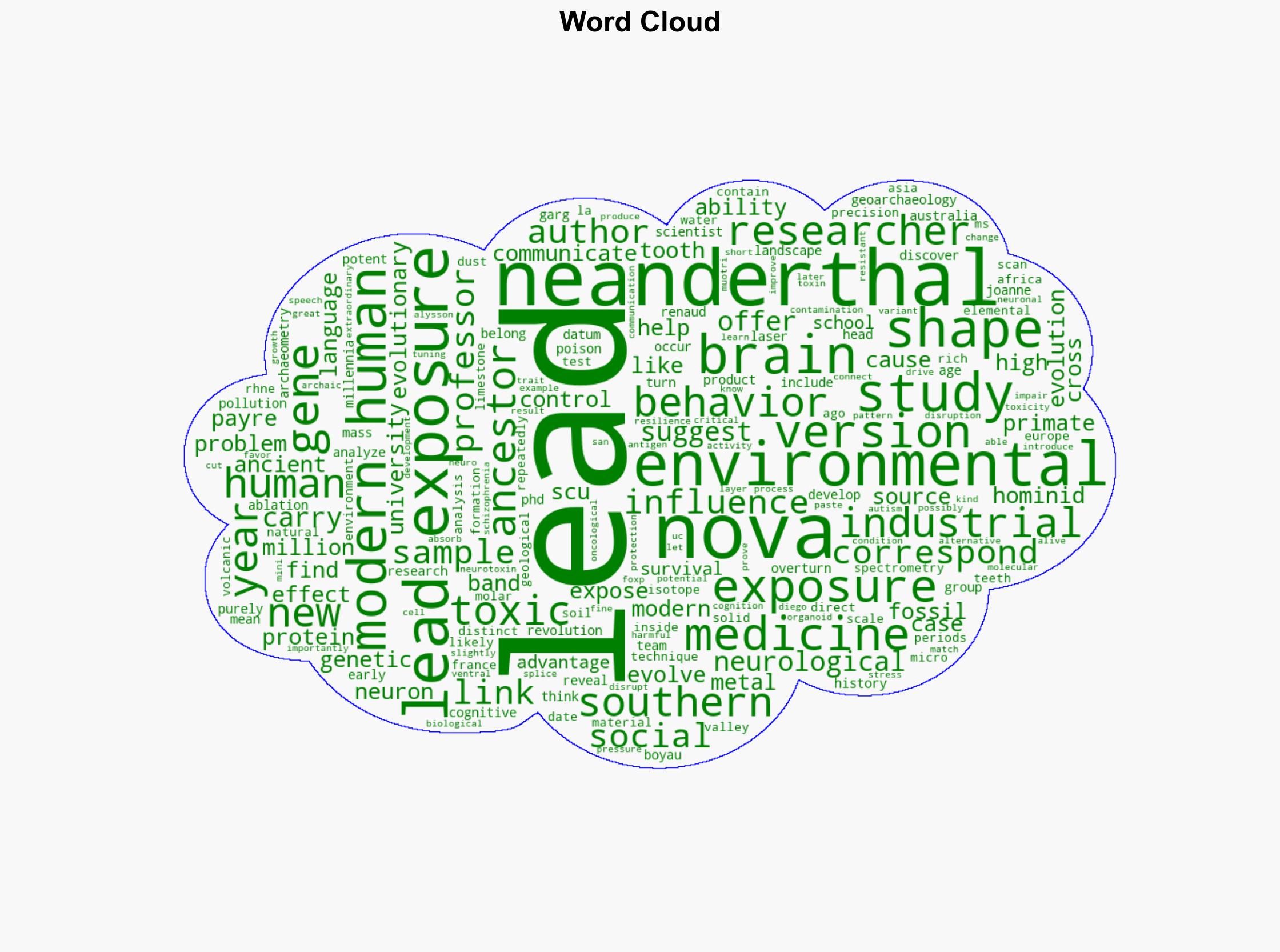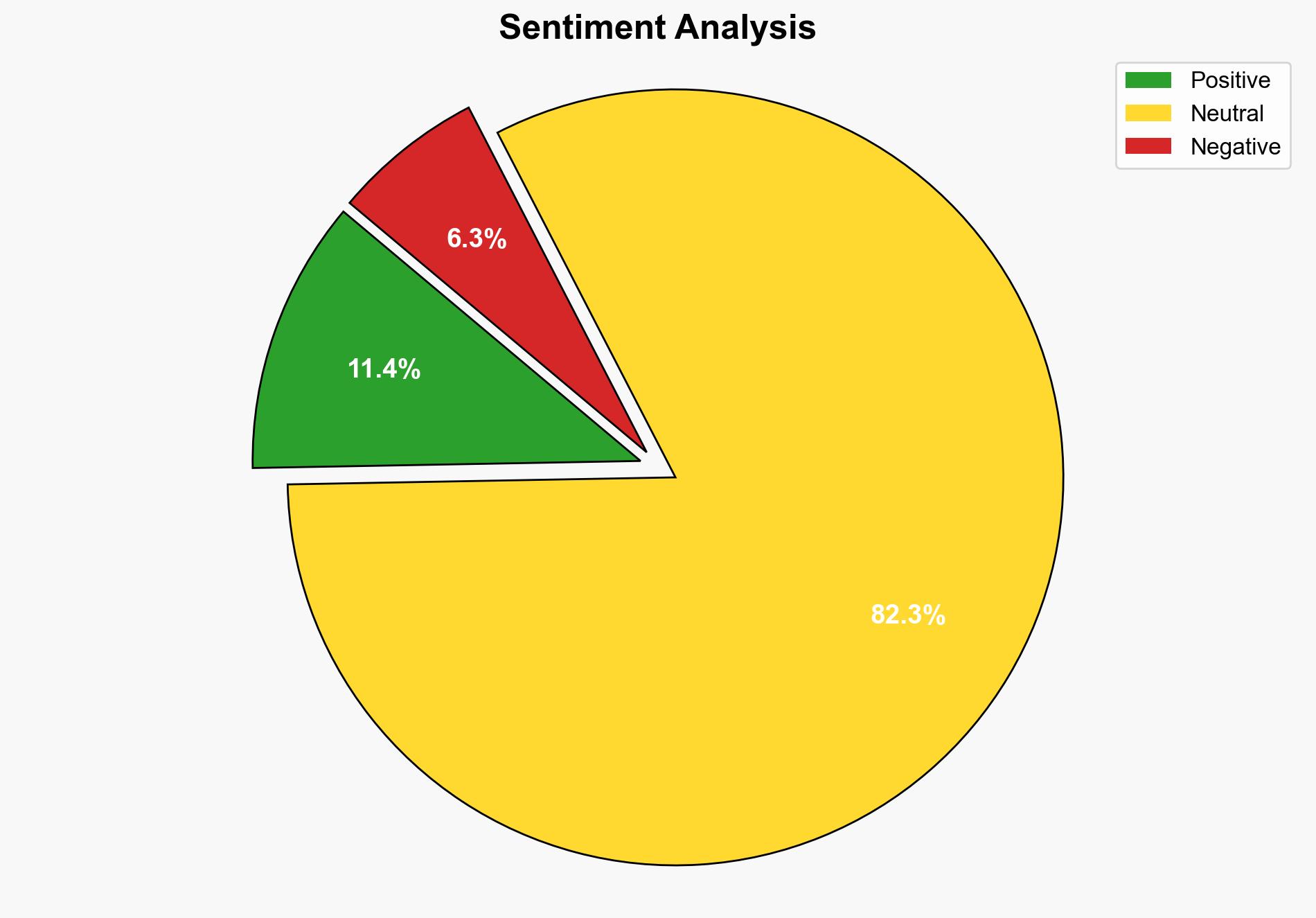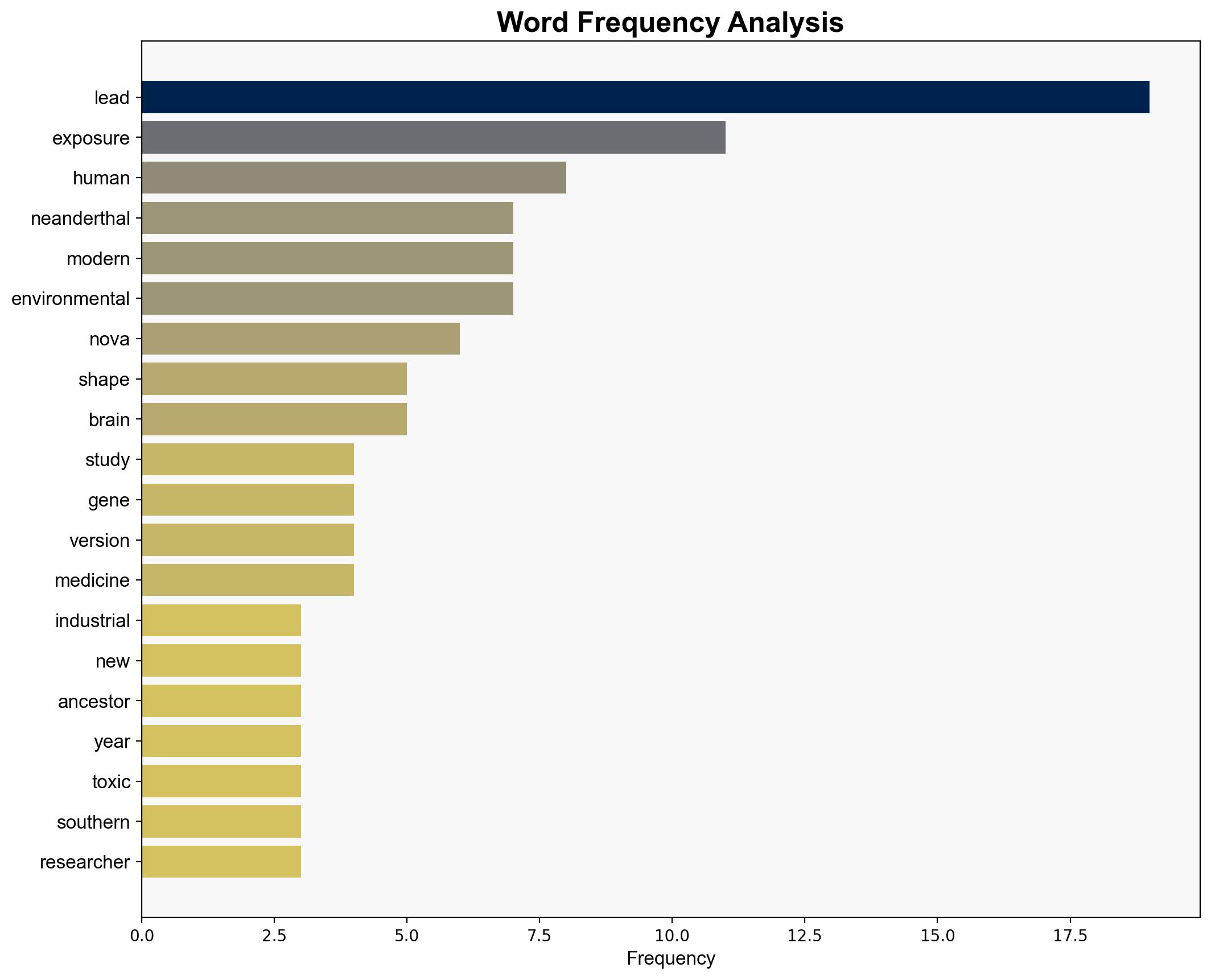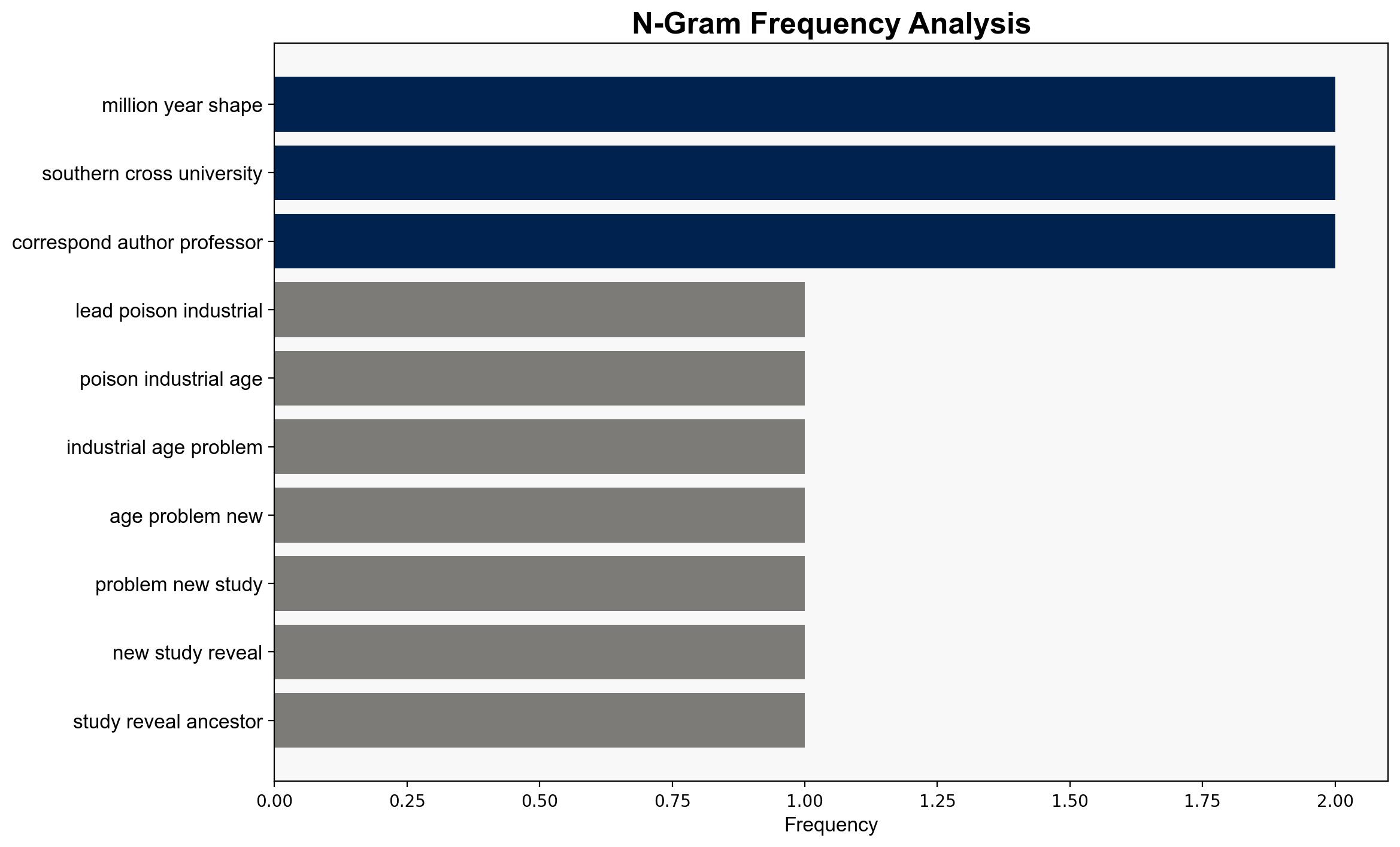Ancient lead exposure shaped Neanderthal and human brains – New Atlas
Published on: 2025-10-18
Intelligence Report: Ancient lead exposure shaped Neanderthal and human brains – New Atlas
1. BLUF (Bottom Line Up Front)
The analysis suggests that ancient lead exposure significantly influenced the evolutionary development of Neanderthal and early human brains, potentially affecting cognitive and social behaviors. The most supported hypothesis is that environmental lead exposure drove genetic adaptations, enhancing modern human resilience to neurotoxins. Confidence in this hypothesis is moderate due to the complexity of genetic and environmental interactions. Recommended action includes further interdisciplinary research to understand historical environmental impacts on human evolution and potential implications for modern public health.
2. Competing Hypotheses
1. **Hypothesis A**: Ancient lead exposure was a significant evolutionary pressure that shaped the cognitive and social development of Neanderthals and early humans, leading to genetic adaptations that favored modern humans.
2. **Hypothesis B**: Lead exposure had minimal impact on evolutionary development, and observed genetic differences are primarily due to other environmental or genetic factors unrelated to lead.
Using Bayesian Scenario Modeling, Hypothesis A is better supported due to the direct evidence of lead in ancient teeth and its known neurotoxic effects. However, the absence of comprehensive data on other environmental factors limits full validation.
3. Key Assumptions and Red Flags
– **Assumptions**: The primary assumption is that lead exposure had a direct and significant impact on neurological development. It is also assumed that the genetic adaptations observed are primarily due to lead exposure.
– **Red Flags**: Potential bias in attributing cognitive changes solely to lead without considering other environmental factors. The study’s reliance on specific fossil samples may not represent broader populations.
– **Blind Spots**: Lack of data on other contemporaneous environmental pressures that could have influenced genetic evolution.
4. Implications and Strategic Risks
The findings suggest that environmental factors have historically influenced human evolution, which could inform current understanding of genetic resilience to toxins. This has implications for public health strategies, particularly in areas with high environmental lead exposure. There is a risk of oversimplifying complex evolutionary processes, leading to potential misinterpretations in policy-making.
5. Recommendations and Outlook
- Conduct interdisciplinary studies combining archaeology, genetics, and environmental science to validate findings and explore other potential evolutionary pressures.
- Develop public health policies that consider historical environmental impacts on genetic resilience to toxins.
- Scenario Projections:
- Best Case: Enhanced understanding of genetic resilience leads to improved public health strategies.
- Worst Case: Misinterpretation of data leads to ineffective policy interventions.
- Most Likely: Incremental advancements in understanding environmental impacts on evolution inform targeted health policies.
6. Key Individuals and Entities
– Renaud Joannes-Boyau
– Alysson Muotri
– Manish Arora
7. Thematic Tags
evolutionary biology, public health, environmental science, genetic adaptation





